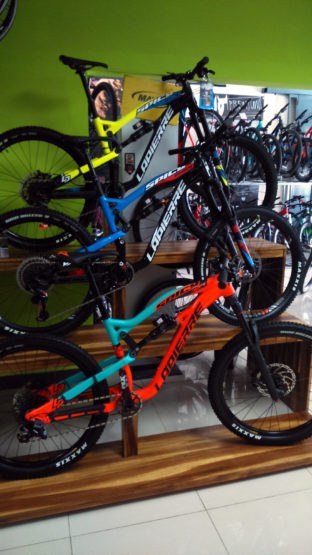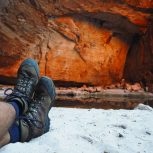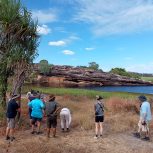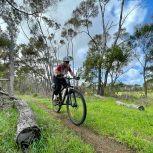Easy guide to buying a mountain bike.

Easy guide to buying a mountain bike.
Posted on
If you’re new to mountain biking, or you’re a road rider looking to hit the dirt, it’s handy to know what to look for when it comes to buying the right mountain bike.
With a seemingly overwhelming number of options, buying a mountain bike can seem like a complicated process. Hardtails, fatties, some with suspension, some without, different wheel sizes and frame materials. The options are endless.
But never fear, for Anna is here! I’ve put together this guide to help cut through all the terminology and explain the different types of mountain bikes and how to choose the right one for you.
Note – this is not meant to be used to buy a bike online. It is meant to help narrow your choices and give you forewarning before you walk into a bike shop to stop the overwhelm and being convinced to buy the wrong bike.
First –
The most important part of buying a mountain bike is making sure you actually love riding mountain bikes. Before investing in your first bike, rent a bike and go off road, hire a guide for the day or join a group tour with bike included and make sure you love it before spending your hard earned cash.
I just happen to know of an awesome mountain biking tour on the Munda Biddi that will let you figure it out – you can find more information here.
Bike style –
Although mountain bikes fall under one banner like road bikes, the type and purpose of each bike can be worlds apart. Mountain bikes are tailor made for specific terrain and riding styles depending on suspension type and wheel diameter amongst other things.
But let’s keep it simple. Most of us just want a good bike that will handle the trails. We don’t need a downhill bike/ freestyle / endure / cross-country bike but if you want to get specific then talk to your local bike shop.
Find your budget.
This is tough! The amount of times I have walked into a bike shop and been dazzled by all the shiny new bikes and speccy helmets…
Before you know it you have a bike worth more than your car and you’re too scared to ride it in case it gets scratched. Don’t be swayed by a fast talking salesman as ultimately a $1,000 bike will still get you there but maybe not in the same sense of style as the $10,000 bike.
As you go up in price, the performance and quality of the bike and its components will get better.
Tight arse – $500 or less. You can find a decent bike for less than $500 especially when you consider used or previous model leftover bikes but ultimately you get what you pay for. If you want a bike to last for years or to handle heavy duty off road riding then go up a level.
Budget – $500 – $1000. You can score a pretty nice bike in this range and have the confidence it will get the job done.
Mid-Range – $1,000 -$1,500. Once you get over $1000 options open up. There are plenty of really nice full suspension bikes and hardtails in this range. These bikes will start to have the same frames as the more expensive models, but with cheaper components.
Upper range – $1,500 – $3,500. Bikes in this range will last you for years and start having all the bells and whistles included in the price.
Million Dollar Man/Woman – $3500 +. If you have this kind of money to spend on a bike you will be able to buy a bike for every occasion. The biggest concern you will have is what bike to ride on which day.
Rigid vs Full suspension vs hardtail –
Yes people used to kick around on penny farthings and old steel frame bikes long before suspension or carbon frames were ever invented but since we have the technology why not use it for our increased comfort.
These days most mountain bikes have built in suspension which helps the bike roll over uneven ground and absorb forces when we hit curbs or bounce over rocks. Full suspension bikes have forks at the front and a shock at the rear. Hardtails, as the name suggests have a rigid rear and a set of forks.
Rigid – No suspension. Easy to maintain and usually less expensive but most riders prefer bikes with suspension for greater comfort.
Hardtail – To keep it simple most of us only need a hardtail for what we want to do. They are usually more affordable, better at climbing, efficient at pedalling and really all we need at our level.
Full suspension – The general idea is front fork and rear shock absorb the impacts of the trail. This reduces the impact on the rider, increases traction and makes for a more forgiving and enjoyable ride. Full suspension is usually more expensive and harder to service though.
Wheel and tyre size –
29” wheels are the biggest. The larger size gives them more momentum and also means they roll more easily over rough terrain. Unfortunately the wheels are often heavier and can be less manoeuvrable through tight twisty trails.
27.5” are increasing in popularity – They are more agile and responsive than 29” wheels but still roll well through tight trails.
26” where the most common but are getting harder to find on the newer bikes. They were liked for being nimble and light.
Plus sized – These wheels sit on the fatter side of normal and claim to offer improved traction, control and comfort over a standard wheel. Unless you plan on doing a lot of sand riding I would stick with the normal sized wheels.
Tyre width –
Frame materials –
Aluminium alloy – This is the most commonly used material for mountain bike frames.
Steel – Tough, inexpensive and offers a smooth ride but is heavy for a mountain bike.
Titanium – Is light and strong but too expensive for most people.
Carbon fibre is fairly common because of its strength and low weight but it’s relatively expensive because of its labour-intensive manufacturing.
Gears –
People like to brag about having a “27/29 speed mountain bike” or whatever number but to keep it simple, the most important things to consider are your fitness level and the terrain you’ll be riding. If you’ll be riding lots of steep hills and you find climbing challenging, then you’ll want to opt for more gears. If you’re a strong mountain biker or you only ride flat terrain, you won’t need as many low gears to power up a hill so you can get away with fewer gears. Bike gearing can be easily changed after you buy a bike so don’t get too concerned with this aspect.
Disc Brakes vs Rim Brakes –
Disc brakes come in 2 versions – Hydraulic which offers more progressive and stronger braking with less finger effort or cable activated. They offer more consistent braking in all conditions but can be expensive to service. Cable operated are more common unless in the higher end range of bikes where it will mostly be hydraulics.
Rim brakes – They are easy to observe brake wear and replace though they do gradually wear out the wheel rim and are less effective in wet or muddy conditions.
Sizing –
Don’t be tempted to buy online or sight unseen. Go to a bike shop and get properly fitted by an expert as each brand will be slightly different in sizing. E.g. a 55cm Giant frame won’t necessarily be the same as a 55cm Trek frame.
When you end up with the wrong bike size you’ll know… It will be uncomfortable and you won’t be able to ride confidently. It might also cause neck pain, back pain and other stress injuries or just simply poor balance, slow riding speed and frequent falls. A correct bike size can prevent all of this!
Don’t obsess about weight –
I know I’ve referenced weight a few times in the article but don’t obsess about it. Weight is important but off-road strength is more important. Flimsy has no place when random rocks, roots and ruts grab you from all angles.
Buying used –
If you decide to buy used you will still need to decide on the above options and then get the correct sized bike. On any used bike, look the bike over very carefully. Inspect the frame for any cracks. Make sure the wheels are true. Look for weather cracks on the tyres. Check for frayed or stretched cables. Make sure the suspension is smooth and doesn’t creak, squeak or leak. Check all fittings, bearings and suspension linkages. If possible, it’s not a bad idea to have a local shop look over a bike for you. The important thing is to avoid spending all the money you have on a bike, only to find out it needs several hundred dollars in repairs.
So you’ve picked out your dream bike. It’s in your budget – time to buy! But first, check the warranty that comes with the bike. Does the warranty start when you buy it or when the bike shop put it into its inventory if it’s last year’s model? Are any bike fits or follow-up services included? Will they throw in a free drink bottle or helmet if you pay cash? You may be able to negotiate some of this if it’s not already included.
Hopefully this helps take some of the mystery out of shopping for your first mountain bike. Just remember to establish your budget, be realistic about your riding style and ask lots of questions.
Once you have that perfect bike, get out and ride!
Anna – Inspiration Outdoors Guide



